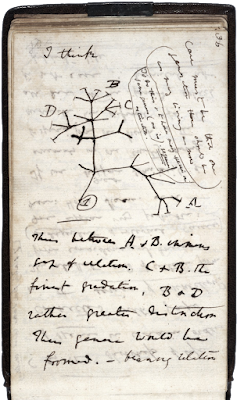Imagine that you could build an evolutionary tree that included every single organism that has ever existed since the origin of life: including every single bacterium, every single archaeum: every individual organism.
The divisions between groups of organisms would then become blurred. For example, it would be impossible to tell where Homo neanderthalensis ends and where Homo sapiens begins. It would be impossible to detect the exact moment when non-avian dinosaurs turned into birds. This also applies at the unicellular level.
The reason we can distinguish groups in the trees of life that represent evolutionary events, is because we do not see most of the branches: the branches that have gone extinct. It is the absence of these individuals, which did not successfully passed on their genomes to the next generation, that allows for the classification and distinction of different types of organisms.
Therefore, a phylogenetic tree of organisms not only gives insight into the groups of organisms in question, but it also shed lights into the organisms that must have existed but did not make it. You could say that a tree of life is also a tree of death.
It also implies that using a phylogenetic tree we could calculate the amount of diversity that has been lost between the two most closely related branches. Assuming that we know the rate of divergence, and that we could somehow put a number to “amount of diversity”.
 |
| Darwin's Tree of Life, 1837 |
